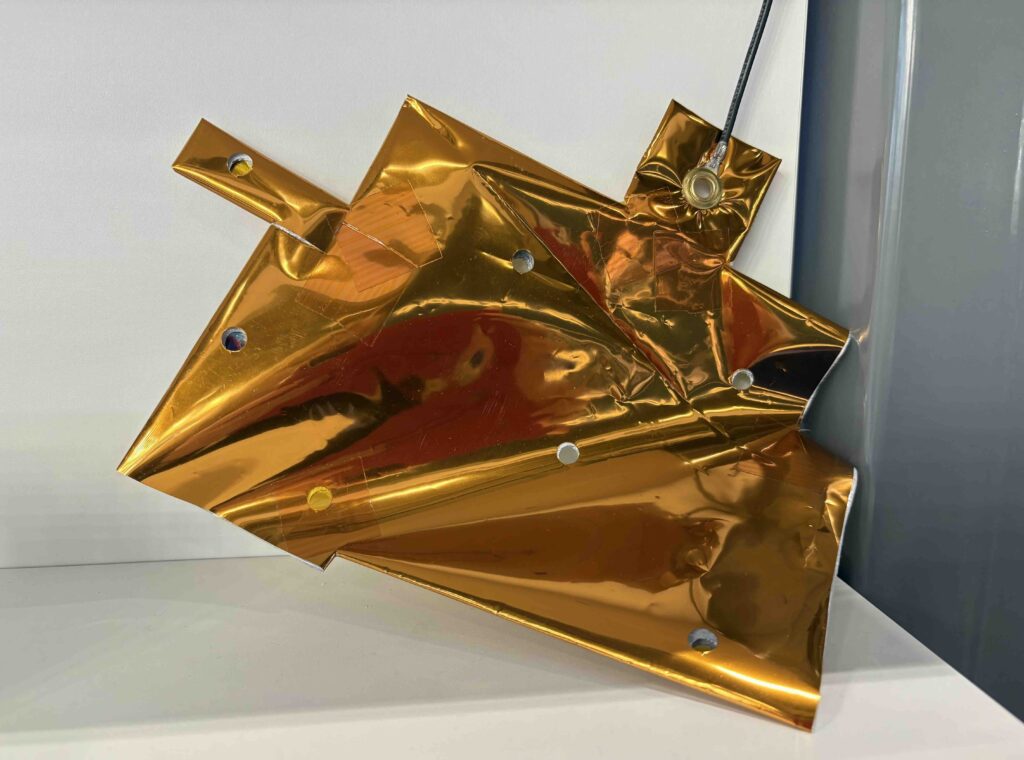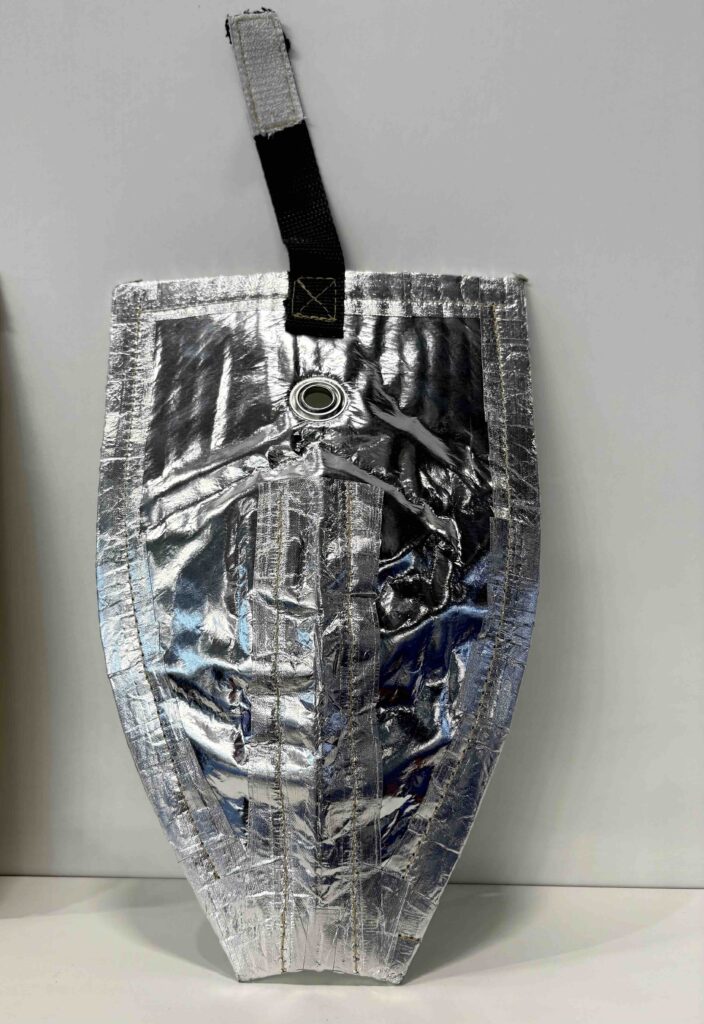
Is there a role for textiles in today’s composites industry? The answer is not just yes, it is a resounding affirmative. In March, the composite industry’s JEC show in Paris confirmed this with a strong showing of textiles ranging from super high-strength fibers to large scale textile structures. These are used across a wide range of markets, from transport to energy, medical and sports equipment. Textiles are offering a myriad of benefits, and in this feature, we look at the contribution of textiles to better performance, lighter weight and improved sustainability.

Performance
Both natural and high-strength fibers are being used in composites, the former for reasons of sustainability and consumer demand, and the latter where high performance and strength are critical. While carbon and glass fibers dominate the high performance market, new developments are making an appearance.
Imiditex is an advanced super fiber from I.S.T., specialists in polyimide. The new fiber has exceptional strength, coupled with heat resistance and an ultra-low water-absorption level. Used with other fibers in a composite, it can achieve higher vibration damping and impact resistance, reduced transmission loss and enhanced electromagnetic wave transparency. This gives it a wide range of application areas from telecommunications equipment, to sporting goods and medical devices.
Zylon is also a next generation super fiber manufactured by Toyobo MC Corp. This is a PBO fiber with an impact energy absorption level that is twice that of a p-Aramid. It also has excellent strength, good flame and creep resistance, thermal stability, and chemical resistance.

Key composite markets, such as aerospace, transport and energy, require high performance at scale with converters performing a vital role in the value chain. Web Industries showcased their extensive portfolio of precision-formatting services and products serving industries that include aerospace structures, wind turbine blades as well as satellite, spacecraft and launch cryogenic multi-layer insulation (MLI).
Textiles form a vital component in the contract services that the company provides such as high-speed slitting, rewinding, spooling, chopping, seaming and laminating. The company added to their manufacturing capability in 2024 with the installation of four new CNC programmable sewing machines.
“We have put a major investment behind this next- generation slitting solution, which is ready for trials and qualification,” says vice president Jason Surman. “It offers scale and cost efficiency without sacrificing quality.”
The production line has the capability to produce compressed ceramic MLI blankets up to around 11.5 feet in width and almost 1 inch thick. Examples include the FG-CADC1094-MLB quilted insulation blanket with an outer layer of woven aramid fabric, which has high tensile strength, and a borosilicate core to deliver flexible, water-repellent, noncombustible thermal and acoustic insulation at high temperatures.

Weight
Carbon fiber reinforced composites (CFRP) are being used to achieve good strength-to-weight ratios in composites in critical application areas. Pronexos is producing three Type IV CFRP helium tanks for each of the Ariane 6 launch systems, for both the lower and upper stages of the rocket. In addition to saving weight, the benefits of carbon fiber include high performance in extreme cold temperatures, and an increased resistance to fatigue and corrosion.
The internal liner, usually made from polyethylene or polyamide, is fully encased in a high strength, wet-wound carbon fiber outer shell. The composite pressure vessel can take on greater loads than a metal alternative, storing more volume and weight of gas.
The Fraunhofer Institute for Ceramic Technologies and Systems IKTS are developing an instrumented pressure tank for the safe storage of hydrogen or gas using a coiled CRFP composite that brings the benefit of lower weight as well as excellent properties under cyclic load. With the rising market demand for fuel cells as a low-emission power source, this is of particular benefit for pressure tanks that are being used to store liquid hydrogen in vehicles.
Fraunhofer IKTS has developed a monitoring system to examine complex CFRP components for signs of structural changes. A simulation model uses ultrasonic waves to indicate structural changes, offering classification and location identification. The detection of damage can take place on an ongoing basis, or periodically during an inspection period. The sensors and electronics can be laminated into the structure to provide further reliability of the measurement system.

Sustainability
The composites industry is taking a number of approaches to address sustainability. Reducing weight and using natural and recycled fibers are very much in evidence in new developments. The Liux Geko electric vehicle uses a recyclable car body that has been made with SAERTEX linen and an ExCiclo RH512 thermoset resin from Swancor that contains around 10 percent bio-based raw material. The vehicles fenders, bumpers, doors and tailgate are all made of the composite and can be fully decomposed using a Swancor patented CleaVER liquid.
In a process that takes just four hours at a temperature of 150C, the linen and resin can be separated without the generation of waste liquid and offering a lower carbon footprint in comparison with incineration. The linen fiber can be recycled and made into a yawn after being carded, drawn and twisted. The recycled resin can also be reused following chemical modification and an adjustment to the formula.
To showcase the potential for composites in architecture, a visual display highlighted milestone achievements for composites in this market segment, culminating with Shigeru Ban’s highly anticipated Blue Ocean Dome developed in coordination with ZERI Japan and Blue Ocean Forum for this year’s Osaka Expo 2025. The architect is building three domes, one with paper, another with laminated bamboo and the third and largest structure using a carbon fiber-reinforced plastic (CFRP).
The pavilion is intended to highlight the impact of plastics pollution, and to promote the sustainable use of our world’s oceans. This is the world’s first CFRP Dome and spans over 40 meters. It is constructed in a lattice structure of three layers with a carbon fiber from Toray Carbon Magic providing a composite that delivers high strength (stronger than steel) and low weight (lighter than aluminum).
In order to comply with fire regulations for temporary structures the first layer uses steel pipes, with CFRP used in the second and third layers. There were a number of challenges to be overcome in using the composite as a building material, such as the need for specially designed joints suited to the material and, should it be needed, to allow for replacement.
This is a just a snapshot of the role of fibers and textiles in composites, but it indicates that the opportunities are growing across some of the most challenging markets.
Dr. Marie O’Mahony is an academic, industry consultant and the author of several books on advanced and smart textiles published by Thames and Hudson. She is a regular contributor to Textile Technology Source.
 TEXTILES.ORG
TEXTILES.ORG


